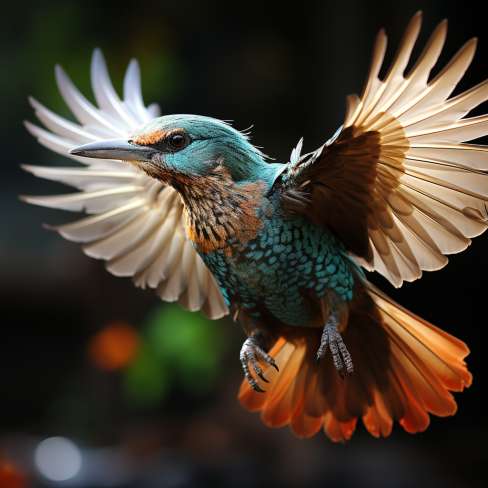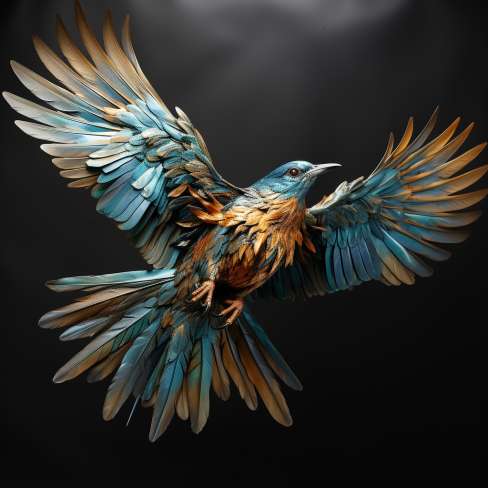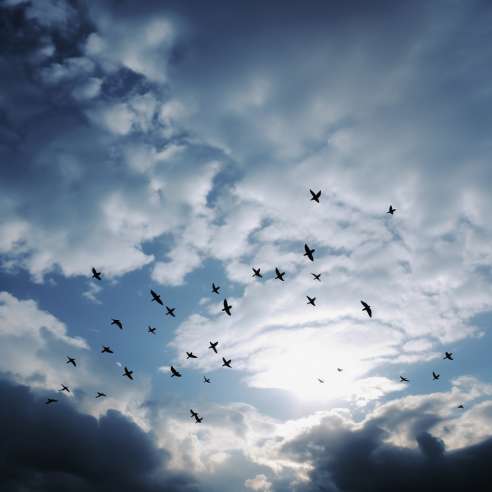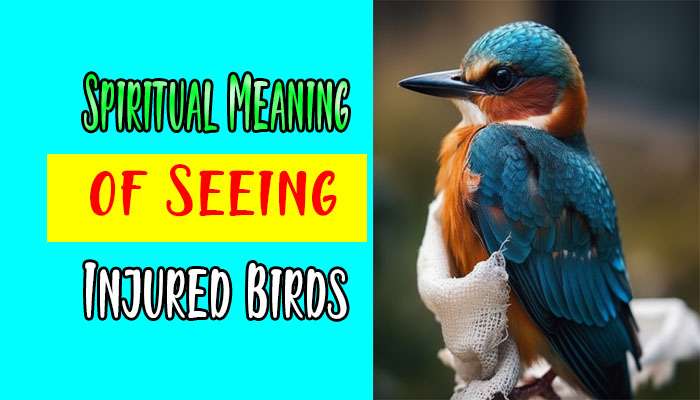Can Birds Fly Without Feathers? Role of Feathers in Avian Flight
As an avid ornithologist and bird enthusiast, I find myself constantly amazed by the intricate details that make birds such extraordinary creatures. One question that often piques curiosity is whether birds can fly without feathers.
In this engaging and informative blog post, we will embark on a journey through the fascinating world of feathers, exploring their significance for avian flight and survival. So, let’s spread our wings and delve into the captivating realm of feathers and flight!
Also Read: Are Birds Cannibals?
Importance of Feathers for Birds
Feathers are not mere adornments for birds; they are essential for their survival and well-being. These remarkable structures serve multiple functions, including insulation, protection, flight, and courtship.

Let’s take a closer look at the roles feathers play in the lives of our feathered friends. Feathers provide vital insulation, keeping birds warm in cold weather and preventing them from overheating in the heat.
The unique structure of feathers traps air, creating a layer of insulation that helps regulate body temperature. Feathers also act as a protective barrier, shielding birds from environmental hazards and the wear and tear of their surroundings.
Bird Anatomy: Feather Structure and Flight
To understand how feathers enable flight, we must delve into their intricate anatomy. Feathers consist of several components, each contributing to their overall functionality.
Feather Anatomy: Shaft, Vane, Barbs, Barbules

Feathers possess a central shaft that anchors the structure. The vane, composed of interlocking barbs, forms the flat surface responsible for generating lift during flight. These barbs are further held together by even smaller structures called barbules, ensuring the integrity of the feather’s surface.
The relationship between feather structure and flight capability is awe-inspiring. The arrangement of barbs and barbules contributes to the feather’s strength and flexibility, allowing it to withstand the forces of flight without compromising its aerodynamic qualities.
Flight Mechanisms in Birds
The magic of avian flight lies in the perfect harmony of multiple forces. Feathers play a pivotal role in this symphony, providing the necessary lift, thrust, and control that enable birds to soar through the skies.
Feathers contribute to lift by generating upward force as air flows over the curved surface of the wings. Thrust is achieved by the powerful flapping of wings, which propels the bird forward.

Drag, the resistance encountered as a bird moves through the air, is minimized by the streamlined design of feathers. Lastly, weight is counteracted by the bird’s strong muscles and lightweight bone structure, allowing for efficient and sustained flight.
Examples of Flightless Birds
While feathers are synonymous with flight, there are exceptions in the avian world—birds that have lost their ability to take to the skies.
Flightlessness has evolved in various bird species, each adapting to their unique environments. Some birds, like the ostrich and emu, have developed powerful legs for running, while others, such as the penguin, have evolved flipper-like wings for swimming.
Can birds fly without feathers?

Can birds fly without feathers? The short answer is no; they can’t. Feathers are not just for looks – they’re essential for flight. Feathers provide insulation, help maintain body temperature, and, most importantly, create the aerodynamic shape necessary for birds to take to the skies.
Picture a feather as a perfectly designed aircraft wing. The barbs and barbules lock together, forming a smooth surface that reduces air resistance during flight. Without this streamlined structure, a bird’s ability to generate lift and control its flight would be severely compromised.
Feathers are like a bird’s passport to the skies, enabling them to soar with grace and maneuver through various environments. From tiny songbirds to majestic eagles, every feather plays a vital role in making flight possible.
Frequently Asked Questions (FAQs)
Can birds survive without feathers?
Birds cannot survive without feathers. Feathers are essential for insulation, protection, flight, and other vital functions.
Do all bird species have feathers?
Yes, all bird species have feathers. Feathers are defining characteristics of birds.
Can birds fly with missing feathers?
It depends on how many feathers are missing and where they are missing from. A bird that loses a few feathers may still be able to fly, but it will be less efficient and may not be able to fly as far or as fast. If a bird loses a large number of feathers, or if the feathers are missing from the wings or tail, it will be unable to fly.
What birds can fly without feathers?
There are a few birds that can fly without feathers. These birds have special adaptations that allow them to fly, such as large wings or strong muscles. Some examples of birds that can fly without feathers include: Ostrich, Emu, Kiwi
What happens if a bird loses its flight feathers?
If a bird loses its flight feathers, it will be unable to fly. This can be a serious problem for birds, as they rely on flight for many things, such as finding food, avoiding predators, and migrating.
Conclusion
So, can birds fly without feathers? The answer is no; they cannot. Feathers are essential for flight, providing lift, propulsion, and insulation. Without feathers, birds would be unable to soar through the air.
However, there are a few birds that can fly without feathers. These birds have special adaptations that allow them to fly, such as large wings or strong muscles. For example, the ostrich is the largest bird in the world and has long, strong legs and large wings that allow it to run and glide.




